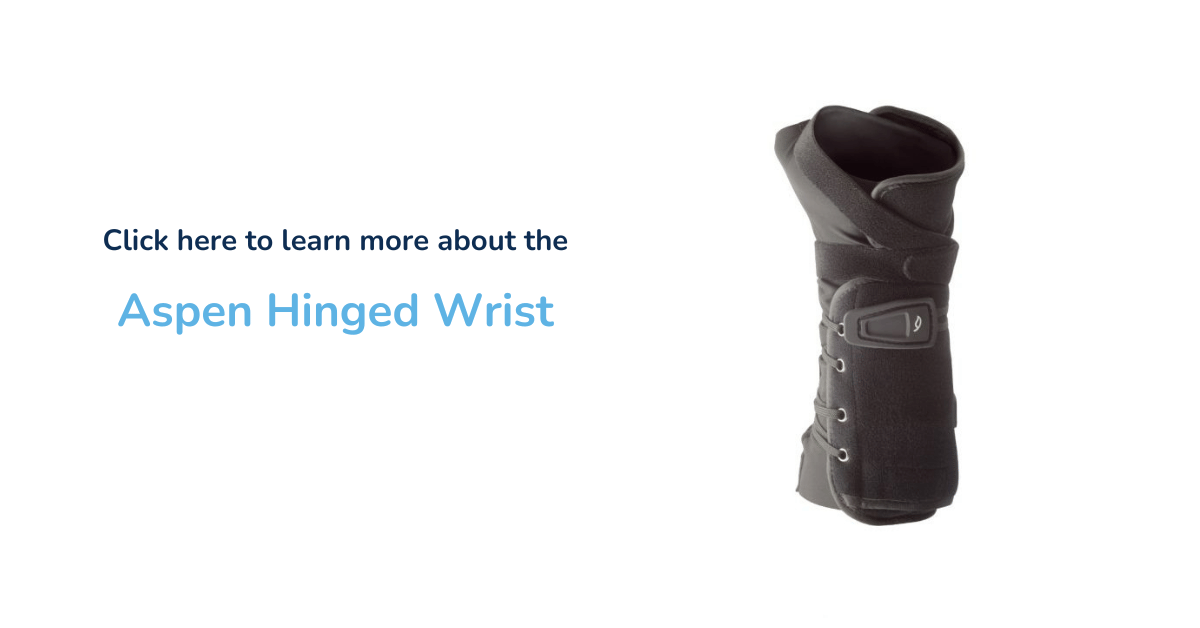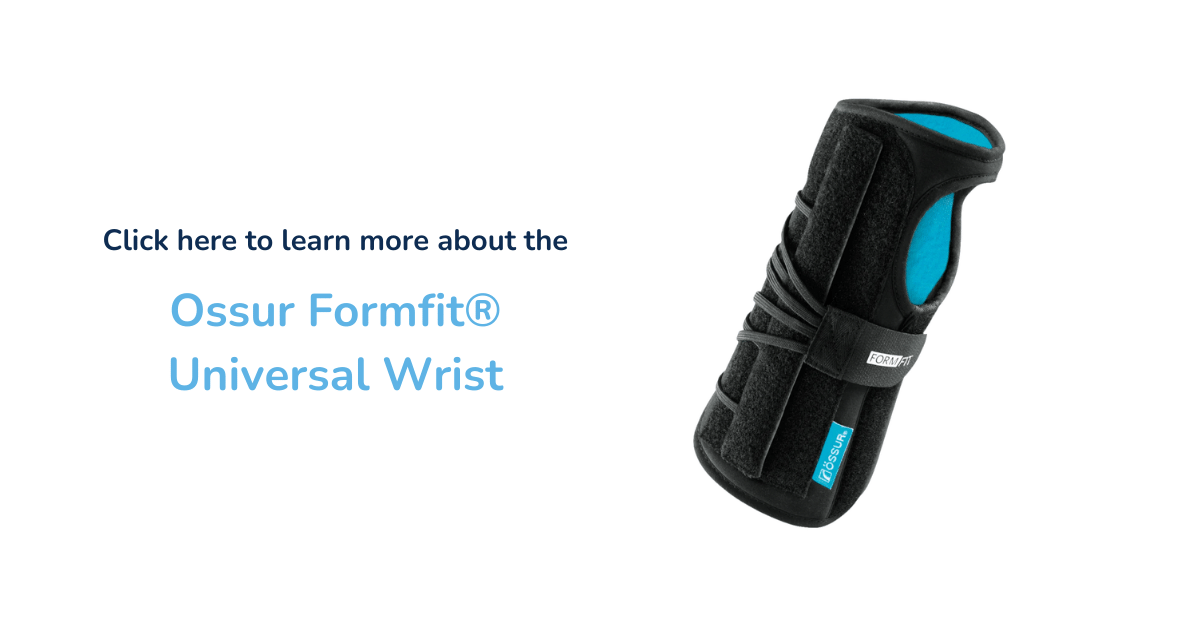Wrist Tendinitis
The damage done to tendons in the wrist and hand which can result in wrist tendinitis are often the result of repetitive strain. This condition is referred to as a repetitive strain injury. A repetitive strain injury can cause wrist tendinitis damaging tendons, nerves, and muscles.
Other lifestyle choices and health factors can contribute to the severity of wrist tendinitis. We will focus on wrist tendinitis, including the causes and symptoms, in this blog.
What Is Wrist Tendinitis?
Wrist tendinitis is a painful condition caused by inflammation of the tendons in the wrist. The tendons are strong fibrous cords made of collagen. There are six tendons that control wrist, hand, and finger movement. The tendons are attached to the ends of muscles in your forearm and hand bones.
Tendons are encased in a sheath that contains synovial fluid allowing them to slide smoothly. Pain and discomfort can occur when tendons or the sheath are damaged or inflamed. Damage can be caused by an injury, age, or repetitive actions.
Two main types of wrist tendinitis are De Quervain Syndrome and ulnar tendinitis. You will experience pain on the thumb side of the wrist with De Quervain syndrome. The tendons on the pinkie side of your wrist become inflamed with ulnar tendinitis.
Risk Factors
You may be at risk for wrist tendinitis based on your daily activities or lifestyle choices that negatively impact your health. Other risk factors include:
- Individuals who perform repetitive hand motions
- Sports that strain the wrists
- Incorrect arm or hand position when typing or texting
- Smoking
- Health issues such as osteoarthritis, gout, rheumatoid arthritis, diabetes
- Poor joint and bone structure
- Age over 40

Symptoms
The main symptoms of wrist tendinitis are pain in the wrist, hand, and fingers. Other symptoms include:
- Difficulty gripping objects such as jar lids, tennis rackets, door knobs
- Joint stiffness which is exasperated when trying to straighten fingers
- Wrist and/or finger swelling
- Pain or tenderness on the thumb and pinkie sides of the hand
- Weakness of the hand
You should consider making an appointment to see your healthcare provider if the symptoms above are present and you experience the following:
- Sudden pain in the wrist, hand, or fingers
- Are unable to grasp regular items and lift them normally
- Items you are used to holding suddenly start releasing from your grip without warning
- You cannot move your fingers or wrist
-
Swelling around your wrist is present and persists
We discuss some tips for communicating with your doctor at your next appointment in a previous blog. You may find the information in this blog helpful for your next visit. Another blog we suggest before your next visit discusses how to talk to your doctor about pain.
Diagnosis
Your healthcare provider will perform a physical examination on your wrist and hand during your visit. This typically includes rotating your hand and making a fist to determine where the pain originates. Other evaluations include pressing on certain areas of your forearm, wrist, fingers, and palm to identify swelling and painful areas.
Some symptoms are similar to arthritis, carpel tunnel syndrome, trigger finger, or wrist/hand fractures. An X-Ray may be ordered to identify arthritis or fractures. Tendinitis will not show on an X-Ray, but ruling out other possible conditions may be helpful during diagnosis. Other tests such as an MRI or ultrasound may also be ordered to rule out other conditions.

Treatment
Many conservative treatment options are available if you are suffering from wrist tendinitis. Treatments range from physical therapy to rest. Invasive surgical options should be reserved until you have exhausted all conservative treatment options and the pain makes it difficult or impossible to perform daily activities.
Treatment Options
Treatment options include:
- Rest
- RICE (Rest, Ice, Compression, Elevation)
- Medication such as nonsteroidal anti-inflammatory drugs (NSAIDs) or steroid injections
- Physical therapy
- Occupational therapy
- Wrist brace
Prevention
Maintaining a healthy lifestyle and avoiding overuse of your wrist can minimize wrist tendinitis. Other preventive actions such as quitting smoking and managing unhealthy habits are also helpful. Be sure your diet and supplements include vitamins and minerals that maintain healthy tendons, bones, and muscles.
Stretching your tendons and muscles prior to performing activities that are physically demanding on your wrists allow your hands and wrists to acclimate prior to heavy use. It is advisable to stretch and take frequent breaks if you perform physical activities at work involving your hands and wrists.
A wrist brace is helpful to prevent wrist tendinitis if you engage in demanding physical activities involving your hands and wrists. The physical strain of these activities can be minimized through the use of a wrist brace.
Wrist Braces
A wrist brace is useful to immobilize the wrist during healing. Your wrist will be supported by the wrist brace and movement will be restricted. This is important during sleep to avoid over-extending your wrist or placing the wrist in a position that will cause tendon inflammation. Wearing a wrist during sleep will support your wrist and keep it in a neutral position which are important for relieving tendon inflammation and to promote healing.

Wearing a wrist brace during the day while performing repetitive wrist motions will help protect your wrist. A wrist brace is also useful for activities that strain the wrist or when lifting heavy items.
We're Here to Help
The team of experts at Elite Medical Supply is here to help identify the right wrist brace for your condition and recovery. We offer a wide selection of braces from world-class manufacturers to help alleviate the pain and heal your wrist tendinitis. Take a look at our selection of wrist braces by clicking here.
When you're ready to order a brace or need assistance making a choice we're here to help. You can reach us at 866-712-0881, send us an email, or fill out a contact form.
Written by Elite Medical Supply of NY
Braces and Products Covered by Medicare
Browse ProductsRecent Posts
- Spinal Decompression at Home: What It Is, How It Works, and Whether It’s Right for You
- Manage Osteoarthritis Progression With a Quality Knee Brace
- Product Highlight: Aspen Active™ P-TLSO
- Understanding Radiculopathy: Causes, Symptoms, & Treatment Options
- Alternatives to Back Surgery: What you Should Know
Topics
- Back Braces (39)
- Knee Braces (31)
- Medicare Beneficiaries (31)
- Pain (24)
- Non-Opioid (22)
- Medical Providers (19)
- Lower back pain (11)
- Product Highlight (11)
- Sciatica (11)
- Muscle Spasms (9)
- Decompression (8)
- Lumbago (8)
- Degenerative disc disease (6)
- Lumbar Spinal Stenosis (6)
- Spinal Stenosis (6)
- Working with your doctor (6)
- Fracture healing (5)
- Herniated Nucleus Pulposus (5)
- Bulging or herniated disc (4)
- Quadratus Lumborum Syndrome (4)
- SI Joint (4)
- SI Joint Dysfunction (4)
- Spondylolysis (4)
- Wrist Pain (4)
- Bone Growth Stimulator Therapy (3)
- Bone Growth Stimulators (3)
- Carpal Tunnel Syndrome (3)
- Neuromuscular Electrical Stimulation (NMES) (3)
- Unicompartmental Osteoarthritis (OA) (3)
- Wrist Brace (3)
- wrist tendinitis (3)
- Braces for Golf (2)
- Electrical Stimulation (2)
- Failed Spinal Fusion Syndrome (2)
- Kyphosis (2)
- Lumbar compression fractures (2)
- Radiculopathy (2)
- Spondylolisthesis (2)
- Supine Cervical Traction (2)
- Total Knee Replacement (2)
- Wrist Braces (2)
- Ambulatory Cervical Traction (1)
- Arthritis (1)
- Braces for skiing (1)
- Cervical Traction (1)
- De Quervain Syndrome (1)
- Digital DME Orders (1)
- Knee Brace Accessory (1)
- Knee Suspension Wrap (1)
- Knee brace support for skiing (1)
- Medicare Scam (1)
- Muscle Atrophy (1)
- PCL (1)
- Patellofemoral Pain Syndrome (1)
- TLSO (1)
- Ulnar Tendinitis (1)
